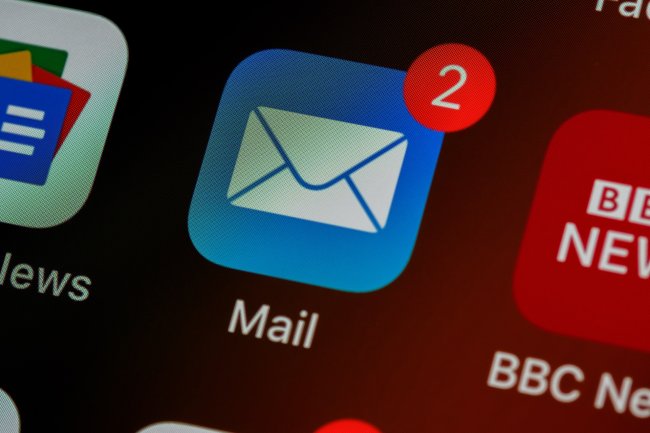7 Tips for a Successful Email Marketing Strategy and Campaign

Email marketing has evolved significantly over time, with numerous tools and software options empowering marketers to unleash their creativity and enhance customer satisfaction. The substantial return on investment (ROI) associated with a well-crafted email strategy makes it a highly rewarding endeavor, surpassing the ROI of other marketing methods.
To achieve exceptional results, a consistent and effective conversion strategy is essential. By employing various email marketing techniques, you can refine and optimize the subscriber experience, thereby facilitating the successful execution of your email campaigns.
Email Marketing Defined:
Email marketing is a marketing approach that informs subscribers on your email list about new products, discounts, and additional services. This strategy involves sending emails to customers with the objective of boosting brand recognition, nurturing leads, increasing engagement, and ultimately driving sales.
Underestimating the potential of email marketing for your business is a mistake you can't afford to make. It not only leads to superior conversion rates across diverse marketing channels but also offers the most favorable ROI. When establishing an e-commerce website, your task doesn't conclude once your products and services are available online. Ensuring that your offerings reach your target audience is crucial, and one of the most effective methods to achieve this is through email marketing.
The Benefits of Email Marketing
Now that you've grasped the fundamentals, here are the advantages of establishing a robust email strategy and campaign:
-
Enhance Brand Recognition
- Utilizing email enables you to discuss your brand, products, and services by sharing educational content, updates, and other vital resources with your subscribers. Additionally, aligning your emails with your brand identity fosters brand recognition.
-
Drive Website Traffic
- Email marketing stands as an effective means to channel traffic to your website. When crafting an email newsletter campaign, you can disseminate special offers, product discounts, and even share snippets from your blog to keep your subscribers informed about your website.
-
Generate Revenue and Boost Sales
- Email places your products and services directly in front of your customers, allowing you to experiment with different marketing strategies to increase revenue. For instance, offering discounts and free shipping can trigger more purchases. Furthermore, sharing curated collections can draw attention to specific products, while cross-selling and upselling tactics can enhance your average order value. Integrating visuals, such as laptop mockups, effectively showcases the value behind your offerings.
-
Enhance Other Marketing Channels
- Email enables you to integrate various marketing channels and drive traffic to other customer touchpoints, including landing pages, in-person events, and social media. For example, you can encourage customers to post reviews on your Facebook page or initiate an Instagram challenge for your subscribers to participate in.
-
Maintain Customer Engagement
- With email, you have ample flexibility to experiment with your messaging through a variety of email campaigns. Keeping your customers engaged and excited about your brand is achievable by diversifying your email campaigns, which helps keep your brand at the forefront of their minds.
-
Collect Valuable Business Data
- Email allows you to gather data from customers, gaining insights into their behavior. You can track analytics and send email surveys and feedback forms to learn more about your customers. This information can be used to refine your emails, business, products, and services. Utilizing email marketing tools to set up automated workflows, which trigger emails based on specific customer actions, further streamlines the process. For example, you can send an automated welcome email as soon as a customer signs up for your newsletter. This not only saves time and effort but also minimizes delays and human errors in the process.
Tips for a Successful Email Marketing Strategy and Campaign
Now that you're aware of the advantages, here are some strategies for developing a successful email strategy and campaign:
- Craft Compelling Subject Lines
Given that your subscribers receive approximately ten or more emails daily, it's crucial to recognize that 35% of email subscribers open emails primarily based on the subject line. If the subject line isn't sufficiently captivating, they won't click through. That's why dedicating time to creating impactful subject lines can make a substantial difference in generating click-throughs.
Furthermore, in today's competitive landscape where people are inundated with marketing emails weekly, your emails must stand out without appearing overly promotional. So, how can you create enticing subject lines that grab their attention? Here are some considerations:
- Utilize action-oriented words (e.g., Improve, Increase, Join, Sale, Ultimate).
- Set expectations for the email's content.
- Incorporate your subscribers' names for a personalized touch.
- Keep subject lines concise, around 50 to 60 characters, and easily readable.
- Prioritize Personalization
The more personalized your email is, the less likely it will be marked as spam. Astonishingly, approximately 70% of brands neglect email personalization, even though 91% of consumers express a preference for companies offering relevant offers. Personalization is undeniably a cornerstone of an effective email marketing strategy, something that businesses of all sizes should implement. Here are some tips for email personalization:
- Tailor your content based on your subscribers' past behaviors.
- Include your subscribers' names in the subject line, body, or greeting.
- Suggest products based on your customers' previous purchases.
- Extend birthday wishes with personalized coupons.
- Implement automated and personalized messages to streamline your sales funnel.
- Delve into your client history.
In essence, personalized emails are your strongest ally, offering endless possibilities and yielding satisfied, engaged customers.
- Highlight Benefits, Not Features
It's crucial to be transparent with your customers about your identity and how your products or services can benefit them. People want to understand how your offerings will improve their lives. If your subject lines convey this, along with a sense of urgency or relevant events, readers will be more inclined to explore further.
- Leverage Social Proof
Have you ever chosen a product with more reviews than another? Humans tend to seek guidance, making decisions easier when many opt for one product over another. This is known as social proof, a principle you can use as a marketer to influence your subscribers and potential customers. There are various ways to incorporate it into your email campaigns, so make sure you optimize your landing page for a successful email campaign. One common approach is mentioning how many have joined your email list on your landing page or lead magnet.
- Keep It Concise
Emails should be straightforward and engaging. Avoid long paragraphs that readers may overlook, and instead, keep your emails concise. Include a link to your blog for more in-depth information. As a general rule, if your emails take more than two to three minutes to read, they'll likely be ignored.
- Test Your Emails
A valuable method for testing your emails is through A/B testing, which allows you to experiment with different content and subject lines to determine what works best for your audience. The insights gained from A/B tests can inform future campaigns. For example, if questions in subject lines consistently yield better open rates, ensure that all your campaign subject lines incorporate a specific question. You can also test the use of emojis in your email copy.
Elements to test in your emails include:
- Calls to action (CTAs)
- Email copy
- Email subject lines
- Links within the email
- Send times
- Various types of featured content
To achieve optimal results, make one change at a time to understand what's making a difference. Diversify the content in your emails and share links to different content types, such as blog posts, case studies, video series, and other media. While these changes may take time, they pay off in the long run when you identify your audience's preferences.
- Monitor Your Metrics
Tracking your email open and click-through rates is vital. Evaluating the performance of your email marketing campaigns is essential for improvement. Monitoring your metrics allows you to gain insights into how subscribers engage with your content. Failing to track these metrics leaves you in the dark about what resonates with your audience and the effectiveness of your efforts. Pay attention to bounce rates, cart abandonment rates, and unsubscribe rates to enhance your email marketing strategy.
Over to You
Understanding the art of crafting a well-structured email is one skill, but mastering the art of devising a potent email marketing strategy is a different endeavor altogether. This expertise empowers you to establish deeper connections with your intended audience, boost sales, and foster a loyal brand community.
The cornerstone of triumph in email marketing lies in refining each facet, spanning from the email subject and its content to the calls to action (CTAs). Best of luck in your email marketing journey!
What's Your Reaction?































